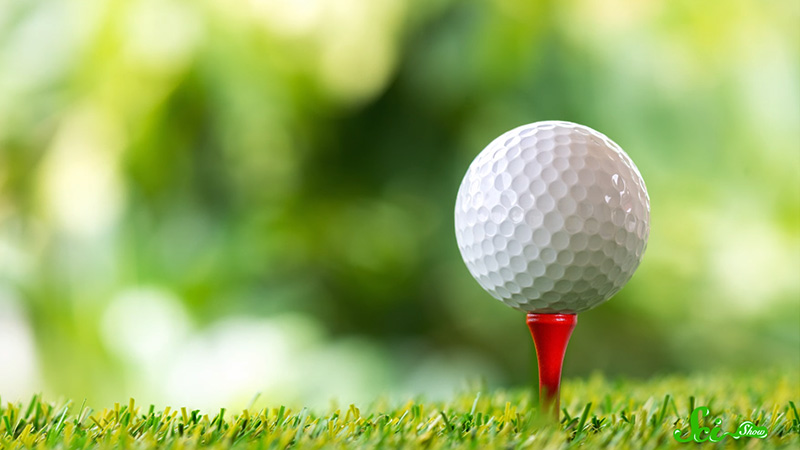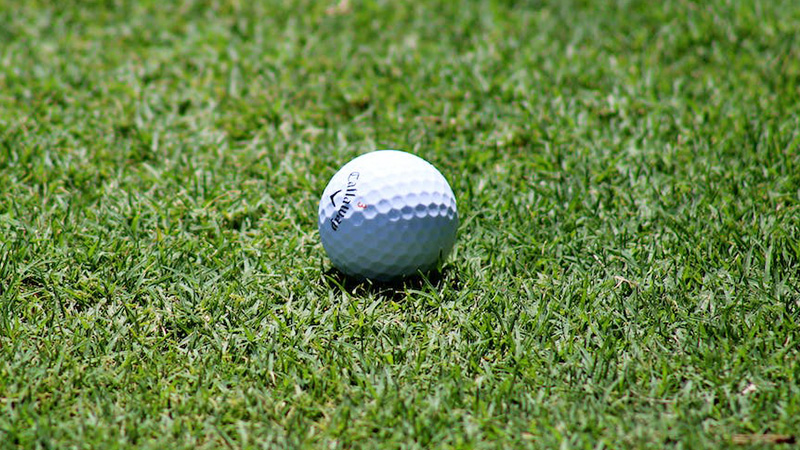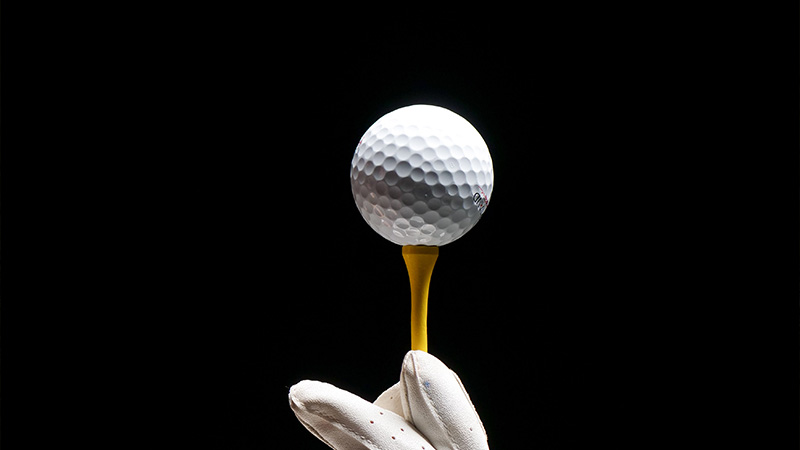Golf balls, seemingly simple spheres, harbor a complex secret behind their seemingly imperfect surfaces. Why are golf balls dimpled rather than smooth? The answer lies in aerodynamics and performance optimization.
These dimples are meticulously engineered to enhance their flight characteristics, granting golfers control, distance, and predictability.
The science behind these indentations transforms the humble ball into a sophisticated tool, reducing drag by creating turbulent airflow, increasing lift for prolonged airtime, and ensuring stable trajectories.
This exploration into the world of dimples reveals the intricate marriage of physics and sporting innovation, demonstrating that imperfections can indeed lead to excellence on the greens.

Why Are Golf Balls Imperfectly Shaped?
Golf balls, despite their seemingly simple appearance, are actually intricately designed objects that have evolved over time for optimal performance on the golf course.
The imperfections in their shape are purposeful and serve specific functions to enhance their flight, distance, and control.
Here are some reasons why golf balls are imperfectly shaped:
Dimples for Aerodynamics
The most prominent imperfection on a golf ball is its dimpled surface. These dimples are not random; they are strategically designed to optimize the ball’s aerodynamics. When a golf ball is struck, the dimples create a turbulent boundary layer of air around the ball.
This reduces drag and allows the ball to travel farther and more efficiently through the air. If golf balls were perfectly smooth, they would experience much higher air resistance, resulting in shorter distances and less predictable flight paths.
Symmetry and Balance
While golf balls may appear round at first glance, they are not perfectly spherical. This slight asymmetry helps ensure that the ball’s weight is evenly distributed, which is crucial for maintaining balance during flight.
If the ball were perfectly spherical, even a minor variation in weight distribution could lead to erratic flight patterns and reduced accuracy.
Compression and Feel
Golf balls are not uniformly solid; they have multiple layers with varying degrees of compression. These layers influence how the ball reacts upon impact with the clubface.
The outer layers are softer, while the inner core is more rigid. This combination of layers and compression allows players to achieve different levels of distance, spin, and feel.
The imperfections in the layers’ composition and their interactions contribute to the overall performance of the ball.
Diverse Player Preferences
Golfers have different playing styles and skill levels. The imperfections in golf ball design cater to these varying preferences. Some players may prioritize distance, while others may seek enhanced control and spin around the greens.
The complex interplay of materials, dimple patterns, and layer compositions allows golf ball manufacturers to produce a range of products that suit different player needs.
Traditions and Regulations
The imperfections in golf ball design have also become part of the game’s tradition and regulations. Golf has a long history, and the development of golf balls has evolved alongside the sport’s rules and standards.
Any drastic departure from the traditional imperfections could lead to controversy and disrupt the balance of the game.
Brief History of Golf Balls

The history of golf balls is a fascinating journey that spans centuries and reflects advancements in technology, materials, and design. From humble beginnings to the modern high-performance balls used today, let’s explore the evolution of golf balls:
Wooden Balls (14th – 17th Century)
The earliest known golf balls were made from wood, usually beech or boxwood. These balls were handcrafted and had a smooth surface, making them challenging to control. Their flight was unpredictable due to their lack of aerodynamic features, and they didn’t travel very far.
Feathery Balls (17th – 19th Century)
Around the 17th century, the “feathery” ball emerged. It was made by stuffing a leather pouch with wet goose or chicken feathers. The leather was then sewn up and painted.
As the feathers dried, they expanded, creating a firm and resilient core. These balls had better flight characteristics and could travel greater distances, but they were expensive and time-consuming to produce.
Gutta Percha Balls (19th Century)
In the mid-19th century, the discovery of gutta-percha, a natural rubber-like substance derived from the sap of the gutta tree, revolutionized golf ball design. Gutta-percha balls were molded into a spherical shape and had a textured surface.
The texture was achieved by hammering the ball while it was still soft. This marked the introduction of dimples, which improved the ball’s aerodynamics and consistency.
Haskell Ball (Late 19th – Early 20th Century)
The next significant advancement came with the invention of the Haskell ball by Coburn Haskell in 1898. This ball featured a solid rubber core wrapped in rubber thread, encased in a gutta percha cover. The Haskell ball’s construction allowed for greater control and consistency in terms of distance and flight.
Two-Piece Balls (20th Century)
In the early 20th century, the two-piece golf ball was introduced. It consisted of a solid rubber core and a cover made of Surlyn, a durable synthetic material. This design offered improved durability and distance, making it a popular choice for amateur and recreational golfers.
Multilayer Balls (Late 20th Century – Present)
As technology and materials advanced, golf ball design became even more sophisticated. Multilayer balls, with a soft core, an inner mantle, and an outer cover, began to dominate the market.
These balls offered a balance of distance, spin control, and feel, catering to a wide range of player abilities and preferences. Urethane covers replaced Surlyn, providing even more control and spin around the greens.
High-Performance Balls (Modern Era)
Today’s golf balls continue to evolve with advancements in materials, aerodynamics, and manufacturing processes.
Manufacturers use computer simulations and wind tunnel testing to optimize dimple patterns and ball flight. High-performance balls are designed to provide specific benefits, such as maximum distance, enhanced spin, or a combination of both.
Why Do Golf Balls Have Dimples?

Golf balls have dimples on their surface to enhance their aerodynamic properties and improve their overall performance when in flight. These dimples are not just decorative; they play a crucial role in how the ball behaves after it is struck by a golf club.
Here’s why golf balls have dimples:
Reduced Drag
When a golf ball is in flight, it moves through the air. The air exerts resistance on the ball’s surface, creating a force known as drag. The dimples on the golf ball’s surface disrupt the airflow around the ball.
This disruption creates a turbulent boundary layer of air that sticks to the ball’s surface for a longer period. A smooth ball without dimples would create a larger and more drag-inducing wake of air behind it.
Increased Lift
The dimples on a golf ball also affect its lift characteristics. Lift is the upward force that opposes the ball’s weight, helping it stay in the air for a longer distance.
The dimples allow the air to flow smoothly over the top surface of the ball while creating a turbulent airflow on the bottom side. This pressure difference results in lift, which helps the ball achieve a more stable and extended flight path.
Improved Stability
Dimpled golf balls are less likely to experience erratic movements in the air. The dimples help prevent the formation of a thin layer of air around the ball called a “boundary layer separation.”
When this boundary layer separates from the ball’s surface, it can lead to turbulent and unpredictable flight behavior. The dimples minimize this effect, providing more stable and predictable trajectories.
Comparison Between Smooth and Dimpled Golf Balls
The primary difference between smooth and dimpled golf balls lies in their aerodynamic properties and the resulting effects on ball flight.
Let’s explore the key distinctions:
Surface Texture
- Smooth Golf Balls: These balls have a completely smooth surface without any dimples. The lack of dimples means that air flows evenly over the ball’s surface.
- Dimpled Golf Balls: Dimpled golf balls have a textured surface with hundreds of small depressions (dimples). These dimples disrupt the airflow around the ball and create a turbulent boundary layer.
Aerodynamic Effects
- Smooth Golf Balls: The smooth surface of these balls results in high air resistance or drag. As they move through the air, the lack of turbulence leads to a larger wake of air behind the ball, slowing it down.
- Dimpled Golf Balls: Dimpled balls experience reduced air resistance due to the turbulent boundary layer caused by the dimples. This allows the ball to travel farther with less drag.
Flight Characteristics
- Smooth Golf Balls: Smooth balls tend to have shorter and less consistent flight distances. Their flight trajectory is generally lower, and they are more susceptible to unpredictable flight patterns.
- Dimpled Golf Balls: Dimpled balls exhibit more stable flight trajectories. The dimples prevent the formation of turbulent air pockets, leading to a more predictable and controllable flight path.
Lift and Distance
- Smooth Golf Balls: The absence of dimples results in less lift being generated, limiting the ball’s ability to stay in the air for extended periods. This translates to reduced distance.
- Dimpled Golf Balls: The dimples on these balls create a pressure differential that generates lift. This lift allows dimpled balls to achieve greater distances and maintain a longer flight.
Modern Usage
- Smooth Golf Balls: Smooth balls are essentially obsolete in modern golf due to their limited performance advantages compared to dimpled balls.
- Dimpled Golf Balls: Dimpled golf balls are the standard in the modern game. They are engineered to maximize distance, control, and consistency, and they have evolved with advancements in technology and materials.
FAQS
Why do golf balls have dimples?
Golf balls have dimples to reduce air resistance (drag) and increase lift, improving their flight distance and stability in the air.
How do dimples affect ball performance?
Dimples create a turbulent boundary layer around the ball, lowering drag and allowing it to travel farther. They also generate lift, helping the ball stay airborne for longer distances.
What happens if golf balls are smooth?
Smooth golf balls would experience higher drag, leading to shorter distances and erratic flight patterns due to lack of airflow disruption.
Can’t modern technology create perfectly shaped balls?
While technology has advanced, dimples remain essential due to their aerodynamic benefits. Attempts to create smooth balls have resulted in poor performance and flight characteristics.
Do all golf balls have the same dimple pattern?
No, different golf balls may have varying dimple patterns optimized for different styles of play. Manufacturers experiment with dimple designs to enhance specific performance aspects.
To Recap
In the world of golf, imperfection has proven to be the key to mastery. The dimples on golf balls, a seemingly minor detail, wield a significant impact on their performance. As the ball takes flight, these dimples come alive, altering airflow, reducing drag, and optimizing lift.
Through a dance of physics and engineering, they transform what could be a simple sport into a delicate art form, where each shot becomes a calculated symphony of aerodynamics.
The evolution from smooth to dimpled balls is a testament to the game’s ceaseless pursuit of perfection, where even the most subtle imperfections lead to remarkable achievements on the course.
Leave a Reply